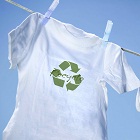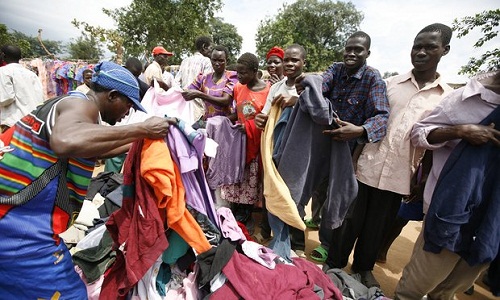FW
India is against the total elimination of duties on goods arriving from China and other members of the proposed Regional Comprehensive Economic Partnership (RCEP). Instead the country is trying for moderate tariffs and feels zero tariffs can be disastrous.
But India is yet to decide on the peak level of tariffs. The peak tariff rate would indicate the floor below which import duties would not be reduced and could be subject to negotiations if other members agree to India’s proposals. Apart from China other members of the 16-member RCEP include Japan, South Korea, Australia and New Zealand.
Faced with several complaints from the industry on the negative fall-outs of free trade pacts signed so far with partners such as Japan, South Korea and Asean (where it has agreed to gradual tariff elimination on most products), India is coming up with a model for future trade pacts where duties would not fall below five per cent.
A submission against tariff elimination is likely to be made by India in the forthcoming inter-sessional meeting in Jakarta this month. India is uncomfortable with the pressure being exerted by RCEP members, especially China, to agree on tariff elimination on a wide range of products.
The 32nd World Fashion Convention in Mumbai is going to be truly world class with a speakers list that is worthy of one of the industry’s main international arena. The IAF and the Clothing Manufacturers Association of India (CMAI) have combined forces to bring a strong combination of international speakers and the real top of the Indian apparel business. The Conference part of the Convention is scheduled for September 26 and 27. Most of the speakers for the conference have confirmed well in advance.
Alex Thomas, Vice President of Manufacturing Excellence and Technical Services at VF, Sanjeev Mohanty, MD&CEO of Jabong, Mark Jarvis, managing director of WTiN, Adriano Goldschmied, truly the godfather of denim who co-founded Diesel and Replay are the confirmed speakers among others.
The final session on branding, is a real star studded affair with the CEO’s of the Indian organisations of global brands Nike, Bestseller and Tommy Hilfiger are in the panel. The way these large global brands operate in one of the fastest growing markets in the world will give all delegates a great insight into the fascinating challenge for global apparel brands: combining global brand consistency with necessary local adaptations.
With a cast like this, the IAF’s 32nd World Fashion Convention in Mumbai is promised to provide the insights into the development of apparel industry.
The crisp clothes by Varana, a new luxury fashion label, might be rooted in Indian tradition, but the brand’s absolutely certain about one thing cut out the kitsch.
Sujata Keshavan design maven says that in 2012, in tony Mayfair, Alexander McQueen’s flagship London store opened to the public. “Boudoir chic”, the fashion spreads called it “Poky,” She’s been responsible for stripping the space of its dark and dingy corners and transforming it with the help of architect William Russell into a cathedral of light and warmth; home, since May this year, to Varana, possibly India’s first international luxe fashion and lifestyle brand.
She further adds that together, the three bring untold experience to the brand, but, interestingly it’s the first foray into fashion for all of them. Varana sells “everyday luxury” womenswear, pretty much a genre of one in the international market, but this is something Keshavan’s been pondering for over a decade.
According to her there are lots of B2B brands in software and engineering products, but there’s nothing in the lifestyle, fashion, apparel, or home spaces. India is the manufacturing hub for so many private labels.
Varana’s is not the east-meets-west of kitsch mirror-work slapped onto a jacket, or a Jaipur kurti masquerading as a dress. The amalgamation of the aesthetic begins with Varana’s design team, which has Indian textile designers from the National Institute of Design, but French and Italian pattern makers and designers.
The brand’s first collection takes inspiration from the Taj Mahal, and comes not only with floral and geometric motifs, but also with a layer of history. Buttery muslin blouses are rendered in jamdani weaves; pantsuits are painstakingly wood-block-printed with inlay patterns from the Taj; dresses are worked with aari needlepoint all three crafts contemporaneous with the construction of the Taj Mahal.
All these people have just stumbled onto the store, because we’ve done no promotions.” Interestingly, they haven’t had much of an Indian clientele, because Keshavan says Indians abroad tend to spend more on traditional outfits, and, “there’s always a feeling of, ‘Oh, we’ll get this in India.’”
The F/W 2017-18 men’s and women’s international fashion begins in Milan: PRIMA MU, the jewel of Milano Unica’s textiles and accessories. The Fair would open its September 23 in the new exhibition area of Milan Rho with a complete restyling dedicated to men’s and women’s high-end textiles and will showcase the textiles-accessories collections developed thanks to close interaction with clients and with the trends identified at PRIMA MU when the collections are still in progress and can be further personalized. Personalization is the new code for excellence, luxury and the increasingly demanding clients, attentive to highlighting their unique characteristics.
The 22 edition of PRIMA MU was a success, the second in a row. In a location that anticipates the elegance that will characterize the new exhibition area in September, exhibitors would unitedly underscore that each contact has been targeted and profitable. Exhibitors are also unanimous in confirming that this appointment is exactly what top-end fashion urgently needed.
The market, increasingly fragmented into numerous niches in terms of trends and products and also more demanding in terms of quality and sustainability, has found a home that anticipates production times. Branded shops will fill their spaces with innovative content, according to the new timeline of today’s fashion.
Through them, Italian accessories and textiles, supported by a select European and Japanese offering, will reach the most important display windows in the world, with that touch of originality that springs from product customization.
Milano Unica has thanked the Italian Ministry of Economic Development, its international operating arm ICE Agency (Italian Trade Promotion Agency), Sistema Moda Italia (category association) and the Municipality of Milan, which, with different roles and modalities, have financed and supported Milano Unica’s global initiative.
Hawassa Industrial Park, Ethiopia’s first, is scheduled to be inaugurated on July 13. Located 275 km South of the country’s capital Addis Ababa, the industrial park is expected to create job opportunities for 60,000 people in two shifts. It is expected to host textile and garment manufacturing factories.
Arkebe Oqubay, Board Chairman of Industrial Parks Development Corporation (IPDC) and Special Advisor to the Prime Minister said that Hawassa Industrial was a pioneer park and could be a model for other industrial parks which Ethiopia aspires to build in the future. According to him the Park will earn 1 billion USD for Ethiopia. Currently 20 companies have set up offices in the Park. Among these, 15 of them are foreign companies while the rest are local manufacturers. The most notable of these manufacturers are PVH and NHM.
Hawassa Industrial Park is equipped with one stop service center and its own renewable electricity sources to address power supply problems.
BASF along with Xinjiang Markor Chemical Industry (“Markor”) opened a new PolyTHF® (polytetrahydrofuran, chemical name: polytetramethylene ether glycol) plant in Korla, Xinjiang Uygur autonomous region in Northwest China. With this, commercial products will now be available for delivery to local customers in China.
The plant, with an annual capacity of 50,000 tons of PolyTHF, will be operated by a joint venture between BASF and Markor registered under the name of BASF Markor Chemical Manufacturing (Xinjiang). It will support the increasing demands of the customers. The plant complements BASF’s existing Asian production facilities in Shanghai, China and Ulsan, Korea.
BASF also produces PolyTHF in Geismar, Louisiana and Ludwigshafen, Germany, with a global annual PolyTHF capacity of 350,000 metric tons. PolyTHF is primarily used to make elastic spandex fibers for a wide variety of textiles including swimsuits, sportswear, underwear and outerwear. It also serves as a chemical building block for thermoplastic polyurethanes (TPU) used to make hoses, films and cable sheathing mainly for the automotive industry.
Other applications include thermoplastic polyetheresters, polyetheramides and cast elastomers for the production of (for example) wheels for skateboards and inline skates.
National Cotton Council (NCC) has signed an agreement with the China Cotton Textile Association (CCTA) to foster enhanced communication between the two. The agreement was signed in Beijing during a recent visit of an NCC leadership delegation to share information with the Chinese cotton/textile industries and update them on the US cotton industry, the NCC said in a press release.
With a focus on quality and in an effort to combat growing competition from synthetic fibres, the two Associations will explore opportunities to jointly promote both US raw cotton and US-manufactured yarn as well as Chinese cotton.
Coordinated by the NCC's export promotions arm, Cotton Council International (CCI), the visit was the seventh by a US cotton industry delegation to China since the establishment of the US-China Cotton Leadership Exchange Programme by the NCC and the China Cotton Association (CCA) in 2006.
"Through clothing donation, people can support many causes that are critical to serving a wide group of individuals in need in the local community. According to a study commissioned by ‘Savers,’ a staggering 85 per cent of clothing and textiles ends up in landfills, even though 95 per cent can be reused or recycled. Americans throw away 8.1 trash bags of clothing on average each year or 26 billion pounds collectively."

Through clothing donation, people can support many causes that are critical to serving a wide group of individuals in need in the local community. According to a study commissioned by ‘Savers,’ a staggering 85 per cent of clothing and textiles ends up in landfills, even though 95 per cent can be reused or recycled. Americans throw away 8.1 trash bags of clothing on average each year or 26 billion pounds collectively. This is surprising considering aluminum beverage can recycling rates in the United States are at 65 per cent. Americans embrace recycling household waste, yet unwanted clothing is commonly discarded.

According to Tony Shumpert, VP, Reuse and Recycling for ‘Savers,’ they go through every single donated item to determine what is of the level of quality for their sales floors. In fact, approximately 60 per cent is priced for resale in their stores or makes its way to another process of reuse.
Savers wanted to know why more clothing and textiles are ending up in landfills. The company commissioned a study to understand why people aren’t doing more to reuse and recycle clothing, and released its ‘State of Reuse Report’ recently. Creating a significant jump in clothing reuse and recycling rates requires overcoming a few major hurdles, Savers found.
Environmental impact
Fashion industry has a major impact on our planet although it isn’t obvious at first glance. It has even been called the second dirtiest industry in the world after oil. This is in large part due to the impact of growing and dying cotton, with its astounding environmental impact. Although a mere 2.4 per cent of cropland is dedicated to cotton production, it accounts for 24 per cent of global pesticide use. It is also a very thirsty crop which often needs to be cultivated on irrigated land.
The industry can take over 700 gallons of water to create just one T-shirt and over 1,800 to manufacture a pair of jeans, Shumpert explained. When you think of that, the more we can donate these products and get them into a reuse stream versus throwing them away, the less burden we put on our environment, he said.
Although many people think twice before throwing a recyclable beverage bottle in the trash, this is not always the case for clothing. When most of us think about polluting industries, we often think of coal power plants or oil refineries, not the T-shirts on our backs. Clearly, reusing clothing to decrease the need for such large quantities of virgin material production is a simple solution.
Social benefits of donating clothes

Explains Shumpert, donating clothing has a major benefit in communities. People donate items to one of Saver’s nonprofit partners. They then convert clothing and household items into revenue by selling those goods to us. Through clothing donation, people can support many causes that are critical to serving a wide group of individuals in need in the local community. It creates this opportunity to have this sustainable, consistent, unrestricted funding for their missions.
Some of the organisations that Savers partners with include: Big Brothers Big Sisters, Easter Seals, the Epilepsy Foundation and the YWCA. To make it simpler to donate clothing and household items, Savers stores are also donation centers. The nonprofit partner associated with the store then directly benefits from these donated items.
If people are aware of the social benefits of donating, this can also help boost rates. According to the State of Reuse Report, once people do make the decision to donate, helping others outweighs convenience, sparing landfills or even tax write-offs. Sixty-four percent of Canadian respondents and 59 per cent of U.S. respondents donate goods to benefit nonprofit organizations.
Make it easier to donate
State of Reuse Report found that, out of people who do not donate clothing, 1 in 3 found it easier to throw items away. Since most people have garbage cans or dumpsters within feet of our homes, it is hard to make things more convenient than land filling.
Savers found that space constraints can both encourage and hinder clothing donations. Running out of closet space was the top reason people were prompted to donate clothing. And the more convenient it is to donate clothing, the less space people will need in their homes to store clothing before donating them, as they can make more frequent trips to donation centers.
Recently, more than 100 guests from across the wool supply chain attended The Woolmark Company’s annual Licensee Conference that was held in Suzhou, China. The seminar aimed to provide insights into industry trends, share industry information and enhance the global competitiveness of Chinese wool textile and garment companies.
Li Binhong, President of China Textiles Development Centre; Yang Xiaoxiong, President of Nanjing Wool Market; and Zhao Huizhou, Chief Designer and Founder of apparel brand EACHWAY, were among the guests invited to speak at the seminar. In addition, The Woolmark Company’s Country Manager China, Jeff Ma, spoke about wool fashion and innovation in his opening remarks.
Guo Ruiping, Professor at Beijing Institute of Fashion Technology (BIFT) and Director of Research and Development Centre for Wool Knitting Design, also delivered a keynote speech, touching upon the direction of wool product development and wool market trends for 2016, as well as the creative process of wool design and the collaborations between the industry and the research centre.
In order to facilitate the local textile industries get their requirement of raw material from abroad in the face of shortage of the commodity in the country, the Karachi Cotton Association (KCA) has urged the Pakistani government to waive all duties and taxes on import of cotton immediately.
Following the devastating crop failure in 2015-16 season when cotton output fell to 9.786 million bales, the Pakistani textile industry has been forced to import raw cotton from overseas to meet its requirement of basic raw material, the KCA said in a statement.
Though the industry wants to ensure contribution towards achieving the target of exports fixed by the government, but the increased taxes on imported cotton are not only translating to rise in cost of doing business of the textile sector, but also making such products costlier in the international market,” the KCA statement added.
The textile industry pays three per cent custom duty and one per cent additional duty on import of cotton. The KCA urged the government to ensure free trading policy in cotton i.e. free export and free import of cotton without any quantitative and qualitative restrictions. The government needs to take concrete measures to increase cotton production in the years to come, the statement said.
This would ensure that there would be ample surplus cotton available for the domestic consumptions as well as exports to keep the presence of Pakistan cotton in the international market and earn much needed foreign exchange for the country. The provision of export surplus will ensure international price of cotton to the Pakistani growers.












